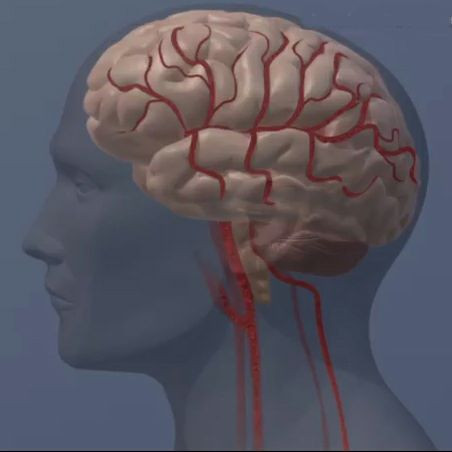Fewer Women, Older Adults Hospitalized For Ischemic Stroke, Yet Rates Rise Among The Young And African Americans

Ischemic stroke is caused by blockages in the blood vessels that supply blood to the brain. It is the most common of all strokes, and for this reason was highlighted in a new nationwide analysis, which delivers both good and bad health news. Fewer people are being hospitalized for ischemic strokes, the researchers say, with the overall number of adult patients falling by more than 18 percent between 2000 and 2010.
However, while there’s been a significant drop in the number of patients over the age of 65, younger patients, between ages 25 and 44, and African American patients are increasing.
What does a stroke look like?
“An 83-year-old right-handed woman was eating dinner when she suddenly slumped to the right and her speech became slurred and non-fluent,” began one case study of a stroke.
Another case report concerning an 80-year-old woman noted: “Patient’s husband witnessed her develop difficulty [walking] and immediately called 911. Patient was lethargic, but oriented and understood questions. … When asked to stand, the patient could not do so without a two-person assist.”
“The middle-aged man had weakness in his left arm and the left side of his face, he couldn't feel the entire left side of his body and his speech was impaired,” reads another description.
Each of these cases are unique to the person, yet typical at the same time. Symptoms of stroke often include paralysis or numbness of the face, arm, or leg; trouble speaking and understanding; blurred or blackened vision in one or both eyes; sudden, severe headache; and trouble walking due to dizziness or other reasons. Signs of a stroke may appear suddenly, within seconds or minutes, and intensify. In far fewer cases, symptoms may take several hours to fully develop into a serious warning of something gone terribly wrong.
Hard Arteries
Ischemic strokes account for about 87 percent of all “brain attacks,” as some people call them. The underlying condition causing a stroke is atherosclerosis, which grandfathers once called “hardening of the arteries.” Essentially, fatty deposits lining vessel walls can cause two types of serious damage: A cerebral thrombosis occurs when a clot forms at the clogged part of the vessel, and a cerebral embolism occurs when a clot forms at another location in the circulatory system before breaking loose, entering and traveling the bloodstream, and reaching vessels too small to let it pass. Sometimes an embolism occurs due to an irregular heartbeat, which can cause clots to form in the heart. Once again, this becomes dislodged and travels to the brain.
While a stroke often leads to a rush to the hospital, “silent strokes” (silent cerebral infarctions) also occur though they may not be obvious. These occur when a blood clot interrupts, though not entirely blocks, blood flow in the brain. A silent stroke places the patient at risk for gradual deterioration of brain function as well as a future stoke.
Stroke, of any stripe, is a serious matter. For this reason, researchers from the Keck School of Medicine at the University of Southern California, performed an analysis of a national database that collects information on about 8 million hospital stays each year. Led by Dr. Lucas Ramirez, a neurology resident, the research team crunched the numbers related to discharge data obtained from Jan. 1, 2000 through Dec. 31, 2010.
Searching the data for ischemic stroke hospitalizations, they discovered the overall rates decreased by a substantial 18.4 percent between 2000 and 2010, with most of that decline occurring in the first five years.
Specifically, hospitalization rates decreased in people older than 65, while increasing for people younger than 65 — rising a surprising 43.8 percent among those between ages 25 and 44 and increasing by 4.7 percent among those between 45 and 64. There were fewer women patients than men during the time period studied, and they also experienced a greater rate of decline than men. From 2000 to 2010, hospitalization rates decreased in Hispanics and whites, but increased by 13.7 percent for blacks, who had the highest yearly rates overall. Finally, in-hospital deaths also decreased during the period studied.
Ramirez says he and his colleagues cannot identify the factors leading to the overall decline, though they believe preventive efforts, such as better blood pressure and blood sugar control, are having an effect in the older age group.
One reason the rising numbers for blacks and younger people are especially troubling is stroke is a prime cause of adult disability. Only rarely do patients completely recover from a stroke. Ramirez concluded that further research is needed to understand why rates have increased among these groups, and to create fresh strategies for addressing their vulnerabilities.
Source: Ramirez L, Kim-Tenser M, Sanossian N, et al. Trends in Acute Ischemic Stroke Hospitalizations in the United States. Journal of the American Heart Association. 2016.



























